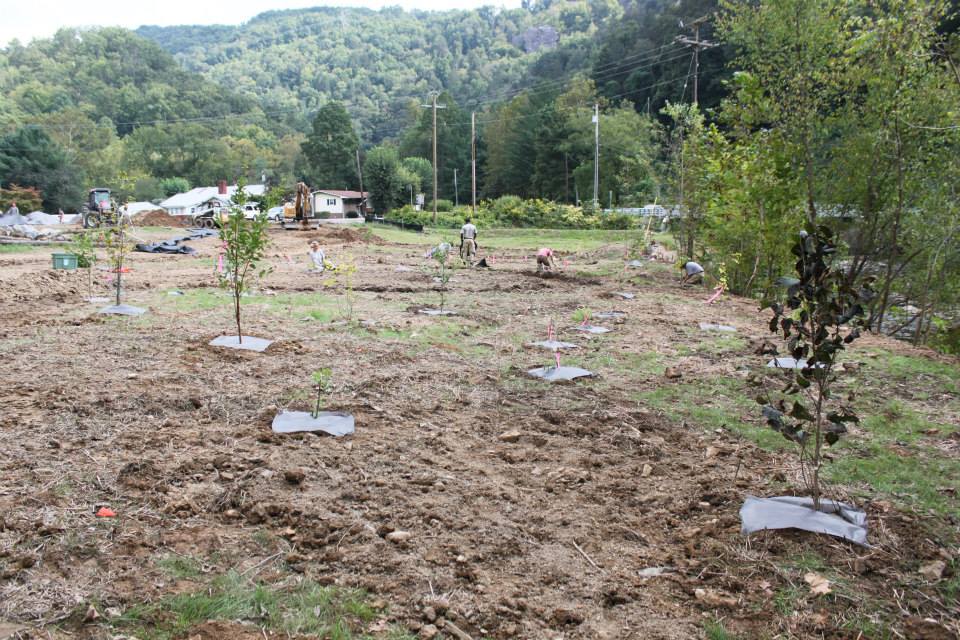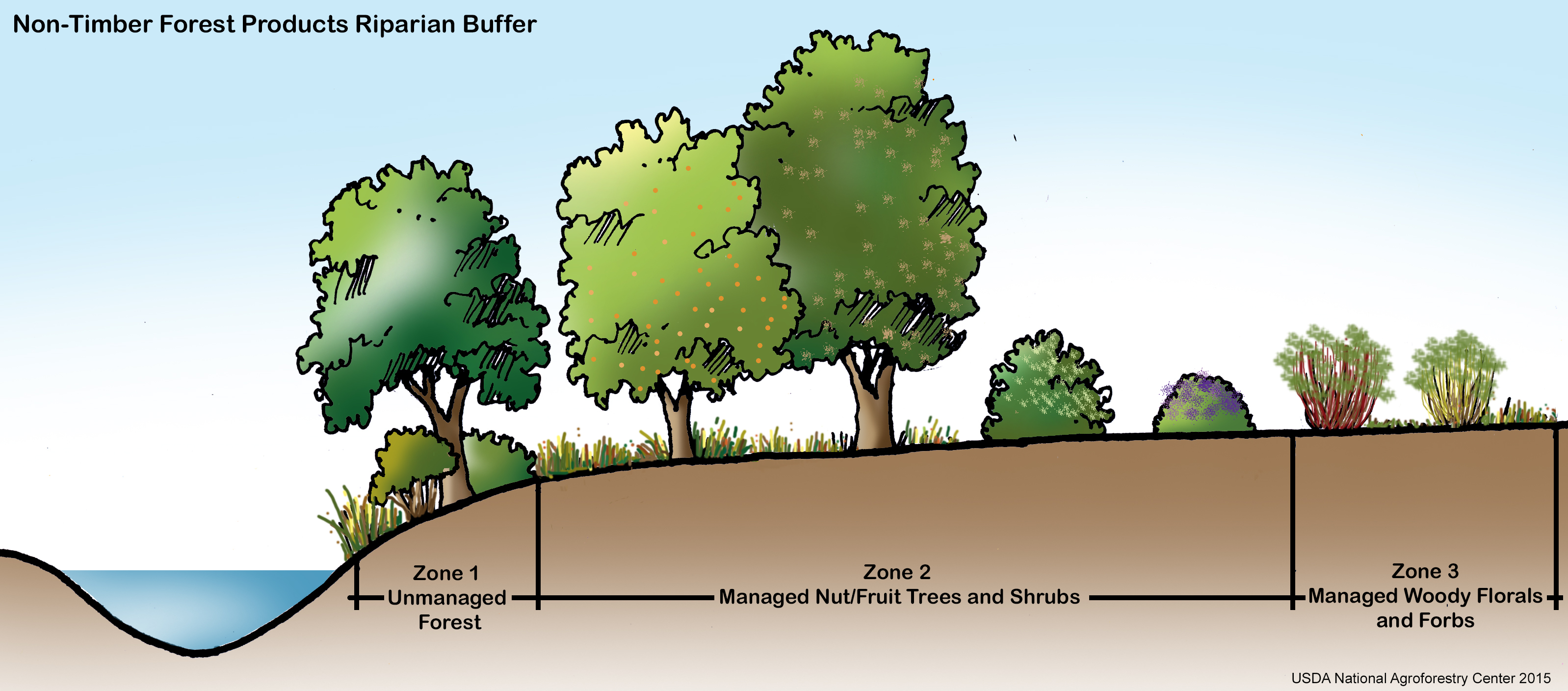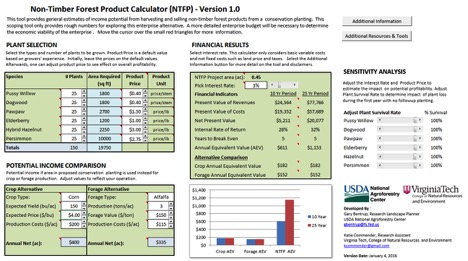Riparian forest buffers offer numerous environmental benefits. They can help improve water quality by filtering non-point source pollution and stabilizing stream banks, enhance terrestrial and aquatic wildlife habitat, and even sequester carbon. Although many landowners see the environmental benefits of riparian buffers, they are often wary of losing this profitable, arable land that they rely on for crop and/or livestock production. As a result, landowners are left with a difficult decision between conservation and production. Even if financial incentives are provided, such as cost share payments, landowners may remove their riparian forest buffer once their contract term is over and payments cease.


In attempt to merge conservation and production, Appalachian Sustainable Development (ASD) created a multifunctional riparian forest buffer program in partnership with U.S. Fish and Wildlife Service (USFWS). While traditional riparian forest buffers focus solely on conservation, multifunctional riparian forest buffers provide opportunities for production by incorporating native fruit, nut and floral trees and shrubs. Instead of excluding production, multifunctional buffers offer alternative non-timber forest products (NTFP) that can be harvested for home use or sale, while retaining environmental benefits.

By merging conservation and production, this new program has created a waiting list of interested landowners who were once cautious of adopting riparian buffers. Now landowners are eager to explore the economic potential of growing and harvesting NTFPs for home use and the market. Recognizing this need, ASD applied for a NRCS Conservation Innovation Grant (CIG) to develop a tool that fulfills this need. Partnering with the USDA National Agroforestry Center (NAC) and Virginia Tech (VT), the NTFP Calculator was created.
The NTFP Calculator is a simple Excel-based tool that explores the economic potential of growing six different woody plants in a conservation planting, such as a multifunctional riparian forest buffer. These species include pawpaws, elderberries, hazelnuts, persimmons, dogwoods and willows, but additional species will be added in the future as economic data becomes available. The Calculator has default economic parameters for each NTFP based on existing market studies and interviews with growers throughout the U.S. However, users can easily adjust variables based on local knowledge and price points for a more accurate calculation.

Landowners often want to compare enterprise options. With this in mind, the Calculator was intuitively designed to offer a way to compare income potential from producing traditional crops or livestock versus NTFPs in a buffer zone. In a simple sensitivity analysis, the Calculator also allows users to adjust the survivability of the NTFPs to assess impacts on profitability.
It is important to keep in mind that the Calculator only provides general estimates of income potential, and landowners will need to complete a more detailed enterprise budget to determine the economic viability of their proposed enterprise. The Calculator provides links to supplementary tools and resources for learning more about NTFPs and guides for developing an enterprise budget. Additional resources on growing and marketing NTFPs can be found at the USDA National Agroforestry Center and Virginia Tech. Buffer$ is another spreadsheet-based tool that can be used for evaluating the implementation costs of buffer establishment.
This project was supported in part by NRCS CIG grant (project number 69-33A7-14-001), in partnership with ASD, VT, NAC and USFWS.

